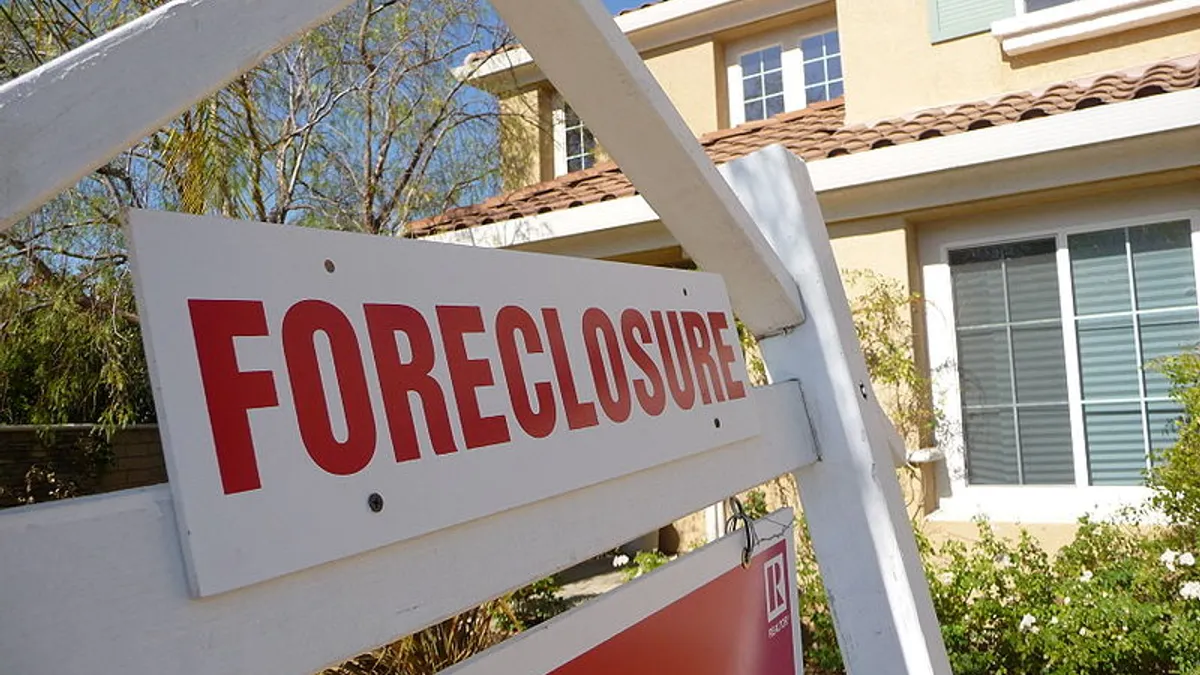As the U.S. moves into recovery from the COVID-19 pandemic, avoiding some of the worst fears of an economic collapse, experts warn that millions of families are still at risk of losing their homes.
The annual State of the Nation’s Housing Report from Harvard University's Joint Center for Housing Studies found that 2.3 million homeowners are behind on their mortgages and face potential foreclosure, while millions more are behind on rent. With federal orders halting some evictions and foreclosures set to expire on June 30, the report warns of a "potential crisis."
The end of those policies, the report states, could "set off a wave of evictions and foreclosures unless federal assistance from the most recent relief package is implemented quickly and effectively." The economic fallout from the pandemic resulted in more than half of all renter households to lose income in the past year, according to Census Bureau data, which the Harvard report says could leave renters in dire straits as home prices continue to rise.
"In order to make meaningful improvements to housing affordability and address the many challenges worsened by the pandemic, policymakers at all levels of government must work together to reduce barriers to producing modestly priced homes," Daniel McCue, a senior research associate at the center and a lead author of the report, said during a virtual event Wednesday. He added that policymakers should "reduce the many persistent racial and ethnic disparities in housing cost burdens, home ownership and household wealth that were reinforced by the pandemic."
Overall, the report found that home sales bounced back from their early dip in the pandemic and prices have climbed rapidly. Citing data from the Federal Housing Finance Agency, the report found that 85 out of 100 metro regions tracked showed double-digit increases in home prices in the first quarter of 2021 compared with the previous year. However, the country is also seeing "historically tight supply," with the existing home inventory down about 30% between March 2020 and March 2021.
That divide was especially pronounced for minorities, as the Black homeownership rate was 46% in the first quarter of 2021 compared with 74% for White U.S. residents. Black, Hispanic and Asian homeowners were also more than twice as likely to be behind on their mortgage payments than White homeowners and were more likely to be behind on rent or facing evictions.
Early in the pandemic, there were widespread fears of evictions and foreclosures as millions of people lost jobs or faced health problems. The Centers for Disease Control and Prevention implemented an order halting evictions in September 2020. The Coronavirus Aid, Relief and Economic Security Act that passed last spring included a foreclosure moratorium for homeowners and mandated mortgage payment forbearance, as well as offering direct assistance to those who lost jobs or faced health care costs.
Several cities also stepped in with their own policies. Philadelphia passed the Emergency Housing Protections Act in June 2020, offering tenants mediation resources and a temporary waiver of late fees, contributing to a decline in eviction numbers. Others converted empty hotels into temporary housing for the homeless population. Meanwhile, Kansas City provided attorneys to represent renters facing evictions.
The policies have helped "protect those who have felt a disproportionate pain," said Erika Poethig, special assistant to the president on housing and urban policy at the White House Domestic Policy Council, at the report release. But with the eviction and foreclosure moratoriums set to expire before July, she said attention has now turned to permanent policies to help protect the housing market. The American Rescue Plan, which passed in March 2021, included $21.6 billion in emergency rental assistance.
The White House is also proposing more housing vouchers to help low-income families and has proposed more than $200 billion in grants and tax credits to increase the housing supply in the American Jobs Plan infrastructure package. In a June 17 "State of the Housing Market" memo, the Treasury Department laid out strategies to address "the long-term structural problems driving the shortage of affordable housing," with investments to encourage construction.
"The next time we face a crisis, we won’t need emergency rental assistance," Poethig said. "We will have a safety net that can catch people as they’re falling in and out of crises."
Clarence Anthony, executive director of the National League of Cities, said city governments had been especially nimble in protecting residents from housing problems and will continue to deliver federal and state assistance. But, he added, the pandemic also put a new spotlight on the racial and economic divide in housing affordability, a problem that will require a persistent focus after the COVID-19 recovery.
"We have to be creative, we have to be responsive and we must have partners in federal and state governments and community-based organizations," Anthony said. "Only if we acknowledge that we have this challenge will we come together and address it."



















